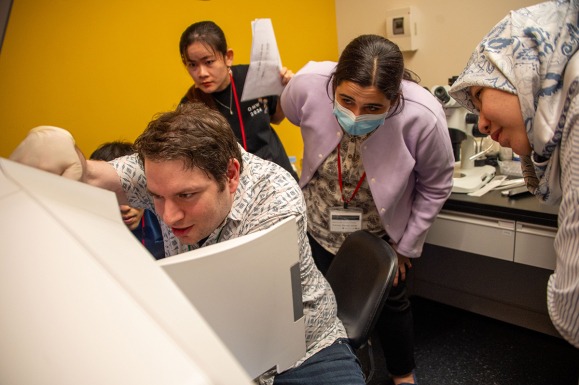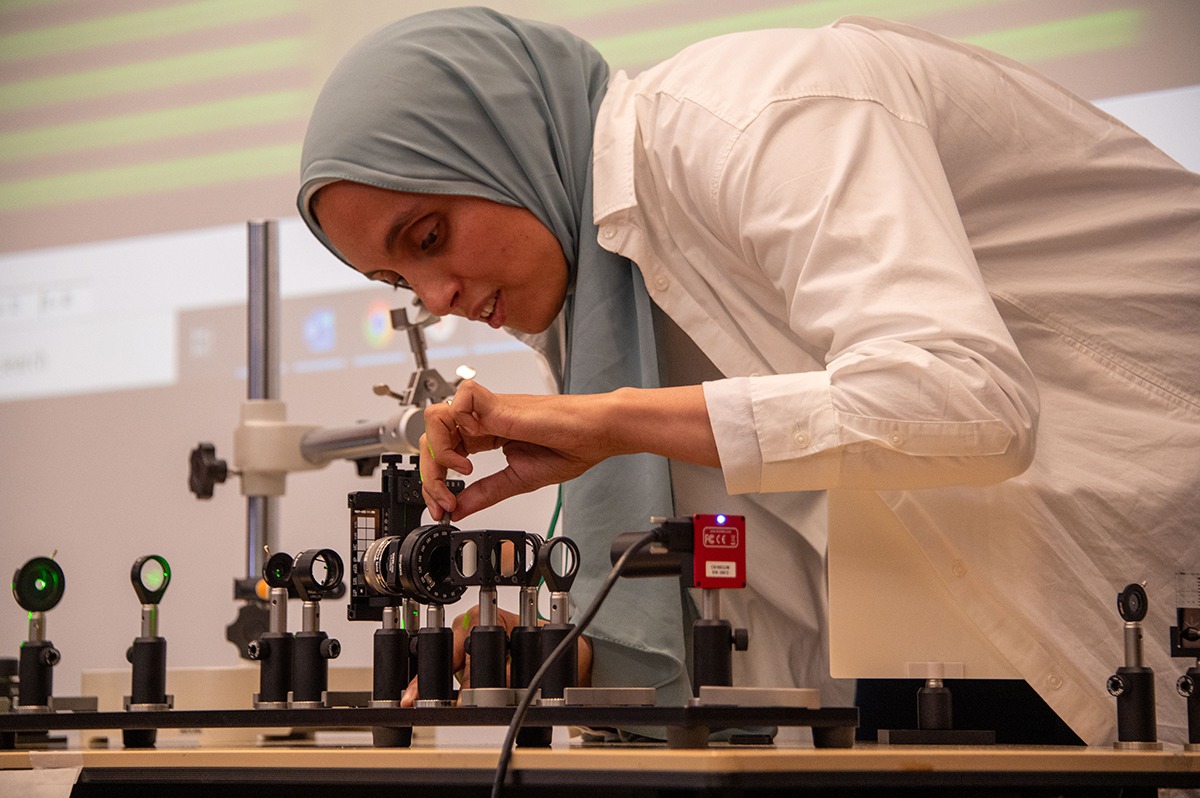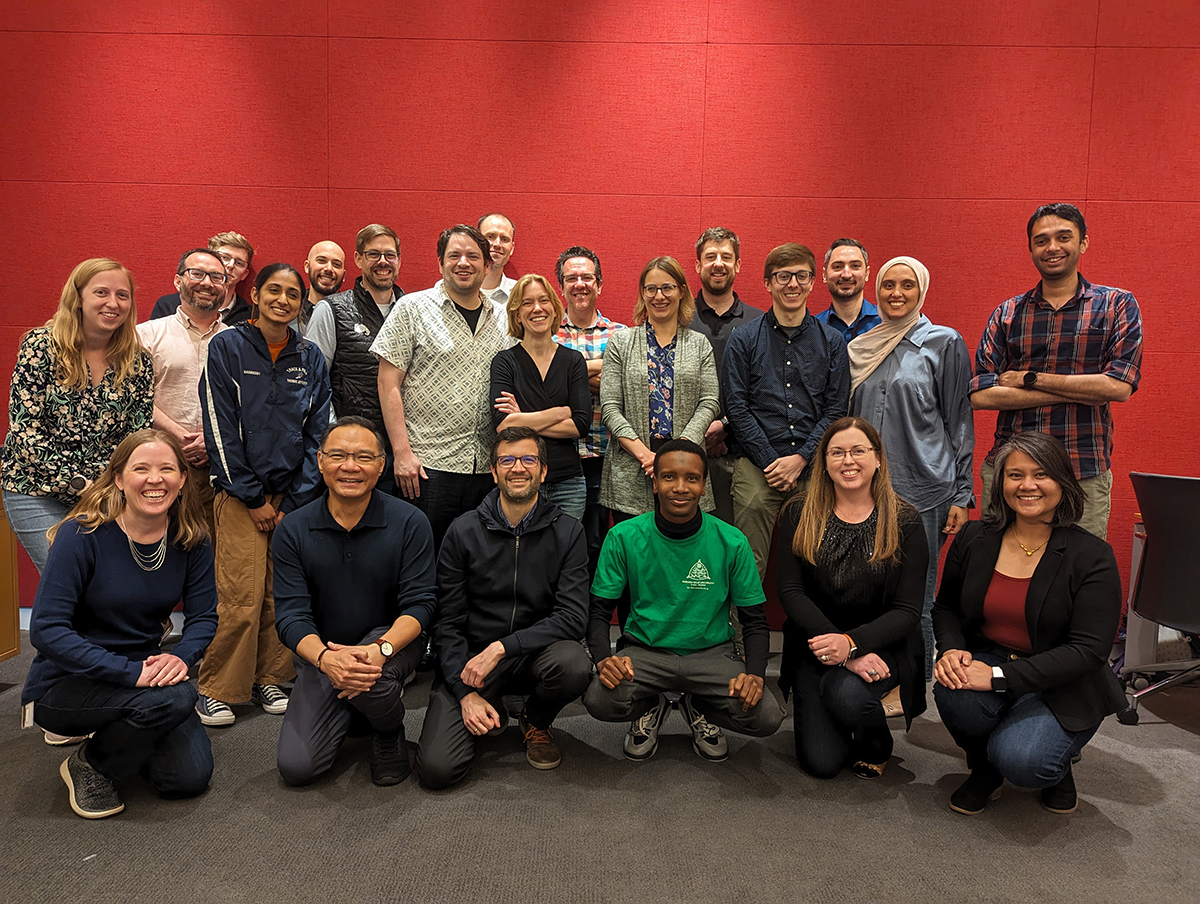
When Senior Group Leader Harald Hess first heard about a new idea for HHMI’s Janelia Research Campus to offer access to the cutting-edge microscopes he and his colleagues were developing, he says he “sort of freaked out.”
Hess and his long-time collaborator Janelia Senior Fellow Eric Betzig were fielding dozens of requests from outside collaborators wanting to use their new imaging technologies. They also knew firsthand the challenge in getting new inventions from the lab to commercial use.
The pair approached Gerry Rubin, then Janelia’s executive director, to discuss an innovative approach: A new center at the research campus that would provide visitors with alternative access to the new microscopes. This intermediate path would free up the researchers to continue developing new technology, while allowing their already-created new microscopes to be tested and perfected by a built-in user base – helping to set the instruments up for success when it came time to bring them to market.
"The beautiful thing was, Gerry resonated right away with that, and everything seemed to flow like magic,” Hess recalls.
With the support of HHMI and the Gordon and Betty Moore Foundation, Janelia’s Advanced Imaging Center (AIC) opened its doors in 2014, giving researchers from around the world access to the cutting-edge microscopes being developed at the research campus and to expert support on using them, at no cost.
- Janelia Founding Executive Director Gerry Rubin
A decade later, hundreds of researchers have benefitted from the AIC, which has enabled them to gain novel insights into cells, structures, and processes that would not have been possible at their home institutions. The AIC has also enabled the development and commercialization of new imaging technology, trained the next generation of imaging experts, and inspired the development of similar centers – and is now spreading the power of imaging to communities throughout the world.
"It's been pretty remarkable to see the AIC grow, and I think the world recognizes now that this is an important missing element in this space as we try to explore new technology,” Hess said during a 10th anniversary celebration for the AIC earlier this year.
Benefitting the scientific community
The initial idea for the AIC came from Rubin’s desire to make the tools being developed at Janelia available to the whole scientific community – a core tenet of the research campus. Janelia also wanted to try to close the gap between when a new microscope was invented and when it became available commercially to researchers, said Rubin, now a senior group leader, during the celebration.
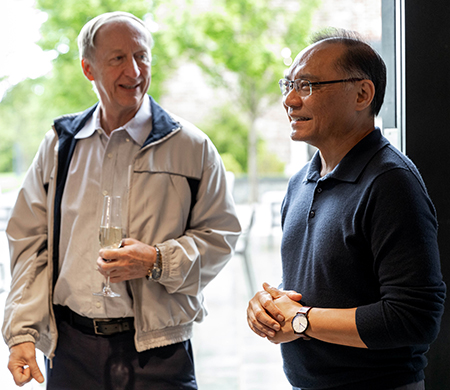 “I’m delighted to say we’ve been inordinately successful in doing this,” he said. “The center has clientele from all over the world, resulting in hundreds of publications that wouldn’t have been possible without people coming here.”
“I’m delighted to say we’ve been inordinately successful in doing this,” he said. “The center has clientele from all over the world, resulting in hundreds of publications that wouldn’t have been possible without people coming here.”
AIC Director Teng-Leong Chew, who has been with the AIC since its inception, said Janelia is a natural place for the innovative center. The research campus’s shared resources, operations support, and campus amenities, along with a talented group of AIC staff scientists and support from Janelia scientists, have allowed the AIC to grow and flourish.
“The most important thing is to get the biologists to believe in the technology,” Chew said. “The initial skepticism was rough, but we were able to go out there and convince people that there is no catch with the AIC program, and I think we finally gained traction.”
Having biologists use the new microscopes and having a dedicated AIC team to test and validate them also makes it easier to move the new technology from the lab to commercial status. Rubin has heard from manufacturers that by allowing biologists to use these cutting-edge microscopes, the AIC creates a market for the new technologies.
Betzig credits the AIC and its visitors for helping to achieve commercialization of the Lattice Light Sheet, PALM, and Lattice SIM microscopes.
“I owe all you guys in the AIC a big debt for getting the visibility and the power to get our instruments commercialized, which is always the final dream,” he said.
The AIC also enables researchers like Betzig and Hess to focus on developing new imaging technology. Before the AIC, the researchers were hosting dozens of visitors a year who wanted to use their evolving microscopes. The dedicated center has freed up the researchers to develop new technologies, such as structured illumination microscopy and adaptive optics techniques, they said.
“Having the AIC is just a tremendous relief for us, on the microscope side, to look a little further out and go to the next project,” Hess said.
More than just microscopes
Beyond technology development, the AIC has helped populate the biological imaging field with experts. That includes past AIC application scientists who now run their own imaging centers, visiting researchers who have worked with the AIC, and students who attended imaging courses run by the center. The AIC has also started a fellowship to train scientists to run imaging centers, a training program that was missing from traditional academic institutions.
The AIC’s success has inspired the creation of similar centers at institutions around the world. And when Janelia researchers saw the support visitors to the AIC were receiving, from experimental design through image analysis, the research campus created a new department, Integrative Imaging, that gives Janelia scientists that same level of support and expertise.
As the AIC marks 10 years, Chew and his staff continue to push the development and use of new technology forward. They are also focusing on efforts to bring imaging technology to underserved areas abroad and to empower scientists to use imaging to address important questions in their local communities.
“We are trying to truly democratize imaging technology and microscopy education,” Chew says.
Related Story
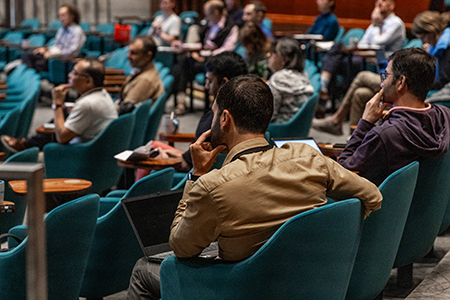
Janelia conference seeks to bring imaging technologies to researchers around the world
During a three-day conference at HHMI’s Janelia Research Campus, microscopy developers, funders and community leaders met to discuss how to provide microscopes, resources, and training to scientists around the world who have limited access to imaging tools.
Media Contacts
Nanci Bompey






